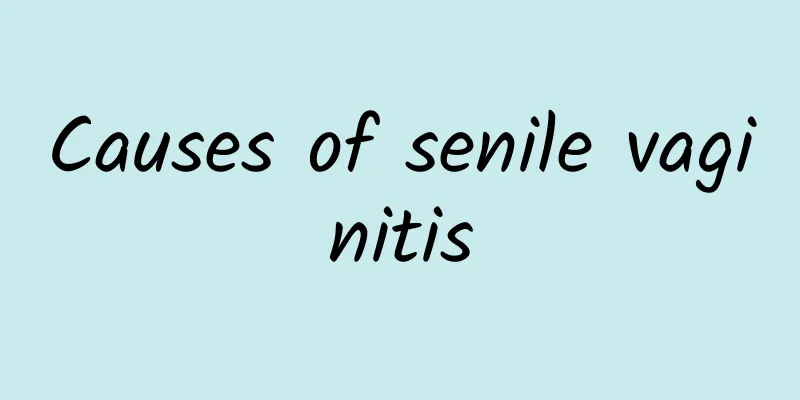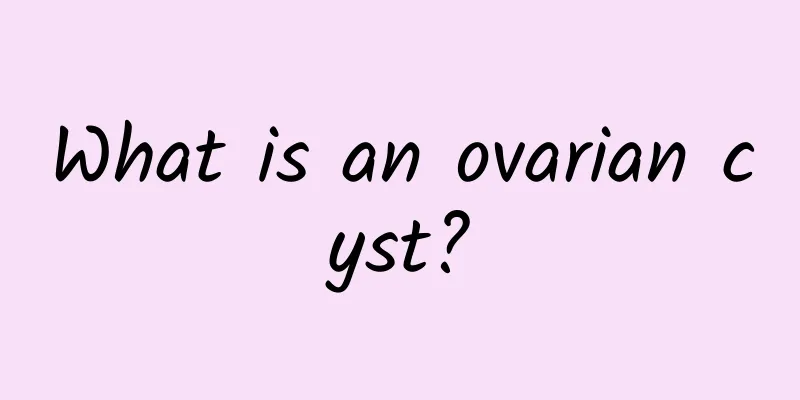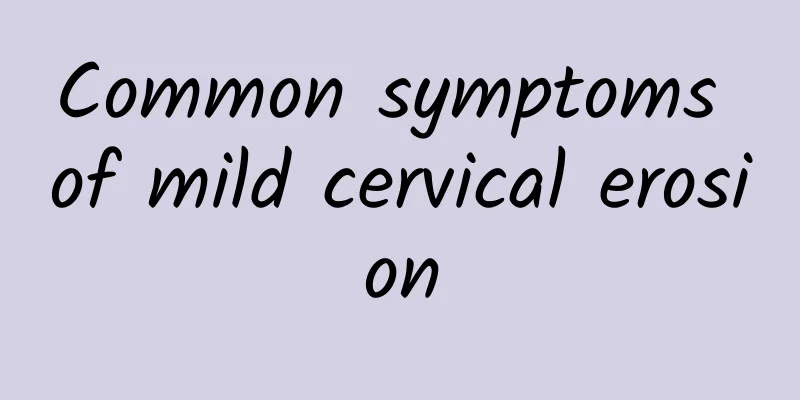Acupuncture is a difficult treatment for "dysfunctional uterine bleeding"

|
Traditional Chinese medicine calls functional uterine bleeding "menorrhea". The classic medical book "Treatise on the Causes and Symptoms of Various Diseases: Miscellaneous Symptoms of Women" says: "Blood that comes out at an untimely rate and drips continuously is called leakage; it comes out suddenly and violently, which is called metrorrhagia." "Gynecology Classics: Bengdaimen" says: "Blood belongs to yin. When it is still, it flows through the body. When it moves, it flows in the wrong direction. Therefore, when the seven emotions are extreme, the five emotions are extremely hyperactive, and the menstrual blood flows violently and does not stop for a long time, which is called metrorrhagia..." It can be seen from this that Chinese medicine believes that this disease is caused by the patient's spleen deficiency, or the diet damages the spleen and leads to the loss of control; or congenital deficiency, menopausal Qi and kidney Qi gradually become weak, the sealing and storage are not functioning properly, and the Chong and Ren meridians cannot be fixed, resulting in "dysfunctional uterine bleeding"; or the body is yang-strong, and the exogenous pathogenic heat damages the Chong and Ren meridians and forces the blood to flow; or the seven emotions hurt the Chong and Ren meridians and cause stagnation; or the residual blood after menstruation and childbirth is not completely gone, and the exogenous pathogens block the Chong and Ren meridians, and the blood does not return to the meridians, resulting in "dysfunctional uterine bleeding". Under the guidance of Chinese medicine theory, following the principle of "treating the symptoms in an emergency and treating the root cause in a slow manner", acupuncture treatment of "dysfunctional uterine bleeding" is simple, easy, safe and effective. Acupuncture treatment of "dysfunctional uterine bleeding" uses Qihai, Yinbai, and Sanyinjiao as the main acupoints. For acute onset, heavy bleeding, dark red or purple-red, viscous with a small amount of blood clots, lower abdominal pain, dizziness, red face, dry mouth, constipation, red urine, red or dark purple tongue or ecchymosis, and thin yellow fur, the method of "treating the symptoms in an emergency" is adopted to clear away heat and cool blood, activate blood circulation and remove blood stasis, and add Dazhui, Quchi, Taichong, Xuehai, Dadun and other acupoints. After the plum blossom needle is pressed hard on the Dazhui acupoint to cause bleeding, cupping with the flash fire method is performed for 15 minutes. The Quchi, Taichong, and Xuehai acupoints are pierced with filiform needles and twisting drainage is performed. The Qihai and Sanyinjiao acupoints are pierced with filiform needles and twisting flat tonification and flat drainage is performed. The Dadun acupoint is pricked with a three-edged needle to let out 5 to 6 drops of blood. The Yinbai acupoint is moxibustioned with a match (a match is struck and quickly pressed on the acupoint and immediately removed until the acupoint is burned. The treatment is performed once per course of treatment). The needles are retained for 30 minutes once a day, and 5 times per course of treatment. For the syndrome of excessive bleeding caused by spleen and kidney deficiency, or continuous bleeding, light red and clear color, accompanied by fatigue, shortness of breath, pale face, or cold body, back and knee pain, dizziness, tinnitus, or fever in the five hearts, dry mouth and throat, light red tongue with thin white fur, and thin and weak pulse, the method of "slow treatment of the root" is adopted to regulate Chong and Ren, warm and nourish the middle jiao, and nourish the kidney qi. Add spleen point, Zusanli, Guanyuan, Shenshu, and Shenque. Zusanli, Guanyuan, Qihai, and Sanyinjiao are pierced with filiform needles and twisted and flatly supplemented and drained. Shenshu and spleen point are cupped with flash fire for 15 minutes. After removing the cup, moxa sticks are used together with Shenque and Yinbai for 20 minutes each (local warmth without burning pain). Leave the needle in place for 30 minutes once a day, and 15 times a course of treatment. Generally, the best effect is achieved during the two hours of Chen and Si (7:00 to 11:00 in the morning). Acupuncture and moxibustion for the treatment of "functional uterine bleeding" achieves its therapeutic effect through the joint regulation of nerves and endocrines. Yinbai acupoint is the source of Qi from the spleen meridian of the foot Taiyin. The spleen is the organ that regulates blood. Moxibustion at this point has the effect of strengthening the spleen and regulating blood. Therefore, this acupoint is a common empirical effective acupoint for the treatment of metrorrhagia by doctors of all dynasties. Guanyuan, Qihai, and Sanyinjiao can regulate the liver, spleen, and kidney as well as the Chong and Ren meridians, activate blood circulation and remove blood stasis, replenish Qi and absorb blood. Dazhui and Quchi cool blood and clear heat. Taichong and Dadun acupoints can be combined to clear the liver, cool blood, stop bleeding, and purge heat. Xuehai regulates blood, removes blood stasis and generates new blood. It can regulate the Qi and blood of the whole body when combined with Qihai. Pishu and Zusanli can nourish the middle Qi, absorb blood and control metrorrhagia. Shenshu is the place where the kidney's essence and Qi gather. Guanyuan is the place where the original Qi is, and it is also the meeting point of the three Yin meridians of the foot and Chong and Ren. Stimulating the two acupoints can nourish the kidney Qi and regulate Chong and Ren. Gentle moxibustion on the Shenque point with moxa sticks can regulate the innate, nourish the acquired, regulate the Chong and Ren meridians, and nourish Yin and strengthen Yang. Patients with metrorrhagia should be advised to stay in bed, abstain from sex, and avoid eating raw or cold food. They can eat lotus root, red dates, lean pork, hawthorn, eight-treasure porridge, etc. For menopausal women, gynecological examinations should be performed to rule out tumors. |
>>: Using psychotherapy to relieve patients' worries
Recommend
What is cervical erosion? Will cervical erosion affect pregnancy?
Cervical erosion is a very common gynecological d...
What are the examination criteria for vulvar itching?
Vulvar itching is a very painful thing for women,...
The stronger the immunity against Wuhan pneumonia, the better? Is Vitamin C the most powerful? Nutritionist: Eat the 6 key foods
Why did influenza and Wuhan pneumonia virus come ...
What are the clinical symptoms of bacterial vaginosis?
What are the symptoms of bacterial vaginosis? Thi...
What is the reason why the menstrual period has not ended for more than 10 days?
What is the reason why menstruation has not ended...
PK milk nutrition, peanuts are scary! Protect your heart and control your sugar intake
It’s small, but has great eating power! Peanuts a...
Which day of menstruation is the ovulation period? This is a more accurate calculation
Menstruation and ovulation are closely related, a...
Specific analysis of the causes of irregular menstruation and dark menstrual blood in women
Irregular menstruation is a very common disease i...
Female adnexitis is prone to recurrence, seriously disturbing women's lives
When female friends have chills, headaches, loss ...
What medicine is good for cervical precancerous lesions
In our country, many diseases have certain folk p...
What are the symptoms of cervical erosion in women?
Nowadays, more and more women are busy with work ...
Is adnexitis hereditary?
Among the female internal reproductive organs, th...
What is the impact of cervical erosion on women's lives? What are the hazards of cervical erosion?
Cervical erosion is a common gynecological diseas...
What are the sequelae of adnexitis?
If adnexitis is not treated in time, it may cause...
What if my period is two days late and I have brown discharge?
What if my period is two days late and I have bro...









